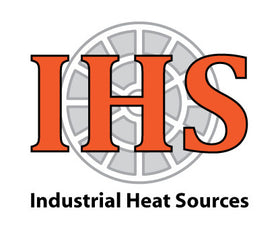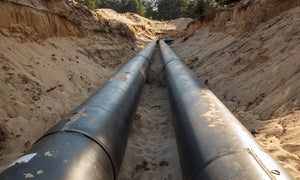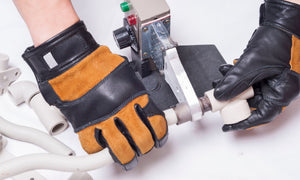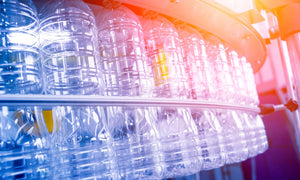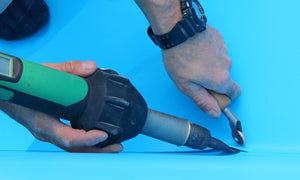How Centrifugal and Regenerative Blowers Work

While both centrifugal and regenerative blowers work in a variety of similar applications, both are not created equal, nor are they used in the same ways.
Though each blower performs the same task, there are a number of key differences in structure and use cases.
Check out an overview of each blower, their applications, and tips for choosing the right fit for your needs.
Centrifugal Blowers
 Centrifugal blowers are designed to push large volumes of air at lower pressures. Commonly used in ventilation systems, centrifugal blowers feature perpendicular inlets and outlets. The inlet feeds air into the center of the impeller and then blows air out through the outlet on the side of the blower.
Centrifugal blowers are designed to push large volumes of air at lower pressures. Commonly used in ventilation systems, centrifugal blowers feature perpendicular inlets and outlets. The inlet feeds air into the center of the impeller and then blows air out through the outlet on the side of the blower.
Centrifugal blowers, classified as medium-pressure blowers, feature larger inlets and outlets, which allow for high air flow volumes.
IHS offers several centrifugal blowers, including Atlantic Blowers’ ABC-100 and ABC-101, which are designed to function in harsh environments and run at low sound levels.
Regenerative Blowers
 While centrifugal blowers are designed to produce high volumes of air, regenerative blowers are used to move air at high pressures. Regenerative blowers feature parallel inlets and outlets, with the inlets and outlets perpendicular to the impeller.
While centrifugal blowers are designed to produce high volumes of air, regenerative blowers are used to move air at high pressures. Regenerative blowers feature parallel inlets and outlets, with the inlets and outlets perpendicular to the impeller.
Regenerative blowers feature smaller inlets and outlets, which allow for greater pressure buildup. Classified as medium- or high-pressure blowers, regenerative blowers allow users to better target air flow.
IHS’ regenerative blower offerings include Atlantic Blowers’ AB-100 and AB-101, both of which provide continuous, oil-free airflow with low noise levels.
Applications for Centrifugal and Regenerative Blowers
Both centrifugal and regenerative blowers can be used in the food and beverage, medical and pharmaceutical, plastic fabrication, and manufacturing industries, among others.
Typical use cases include drying fruits and vegetables, shrinking labels on bottles, and sterilizing tools or medical equipment in assembly lines.
When choosing which type of blower to use for your application, consider the following questions:
- How many items need to be dried, heated, or cooled?
- What is the surface area of the items that need to be dried?
- What is the rate of speed of the production line?
These questions will help you determine which type of blower you’ll need, the diameter of the inlet and outlet, and amount of pressure and air flow necessary to get the job done.
Tips For Choosing Your Blower
There are a number of misconceptions users have about blowers regarding pressure, air flow, filters, and size. Here are four tips to keep in mind when choosing the right blower for your application.
1. The main difference between centrifugal and regenerative blowers is air flow and pressure. When choosing which blower to purchase for your application, keep in mind that centrifugal blowers produce greater air flow at lower pressures, and regenerative blowers produce lower air flows at higher pressures.
2. Choose a blower system that’s sized to your application—and beyond. Sometimes people purchase blower systems and realize they don’t have enough air flow to get the job done. In other cases, users will need to increase output and won’t have equipment large enough to do so. With those cases in mind, it’s important to size up so you can grow your productivity without needing a new blower. When initially purchasing your blower system, plan ahead for increased capacity and productivity.
3. Regulate air flow so the heater can perform according to the way it was designed. It’s important to make sure you’re not overloading your heater with air—so much so that your heater passes its maximum heat level. Therefore, to ensure your heater reaches its rated and/or desired temperature setting, make sure the blower does not produce too much air flow. If additional air flow is needed, then a larger heater will also be needed.
4. Use an inlet air filter. Air filters remove fine particulate particles from the blower system, extend the life of the system, and keep impurities from building up in the impellers and other moving parts of the system. High-performance, quality filters are crucial for food, sterilization, and medical applications, as they produce cleaner outputs.
There are two types of air filters: reusable and disposable. In line with its sustainability efforts, IHS only offers reusable filters. To prevent downtime, users can purchase two reusable filters and substitute them as needed.
Need Help Choosing a Blower?
IHS is happy to help you choose the type of blower you need for your application. We can also send you trial testing equipment so you can determine the right fit yourself. Contact us for more information on our products, service offerings and trial equipment runs, and don't forget to subscribe to our complimentary, bi-monthly newsletter for expert advice, industry resources, and more.
- Robert Heater
